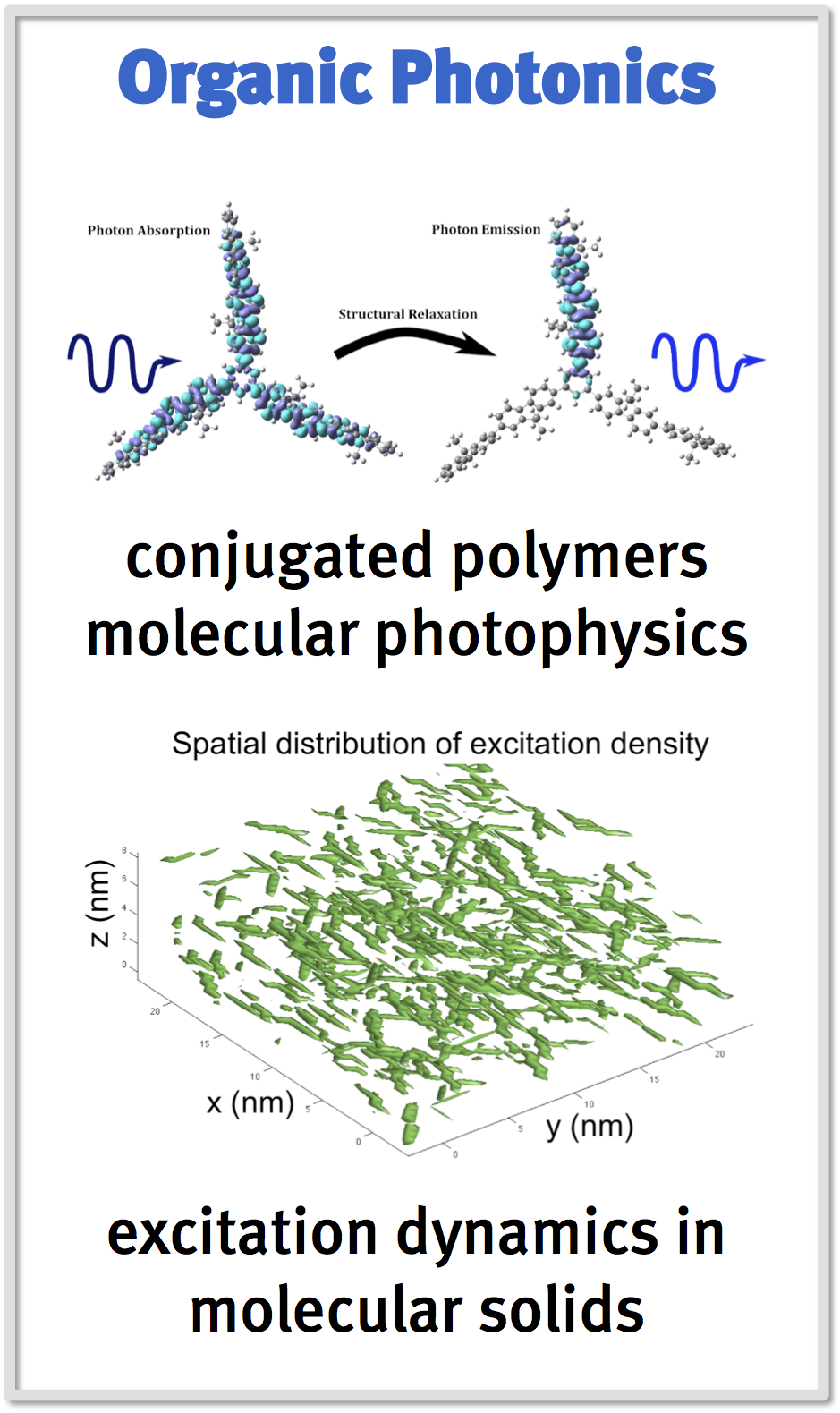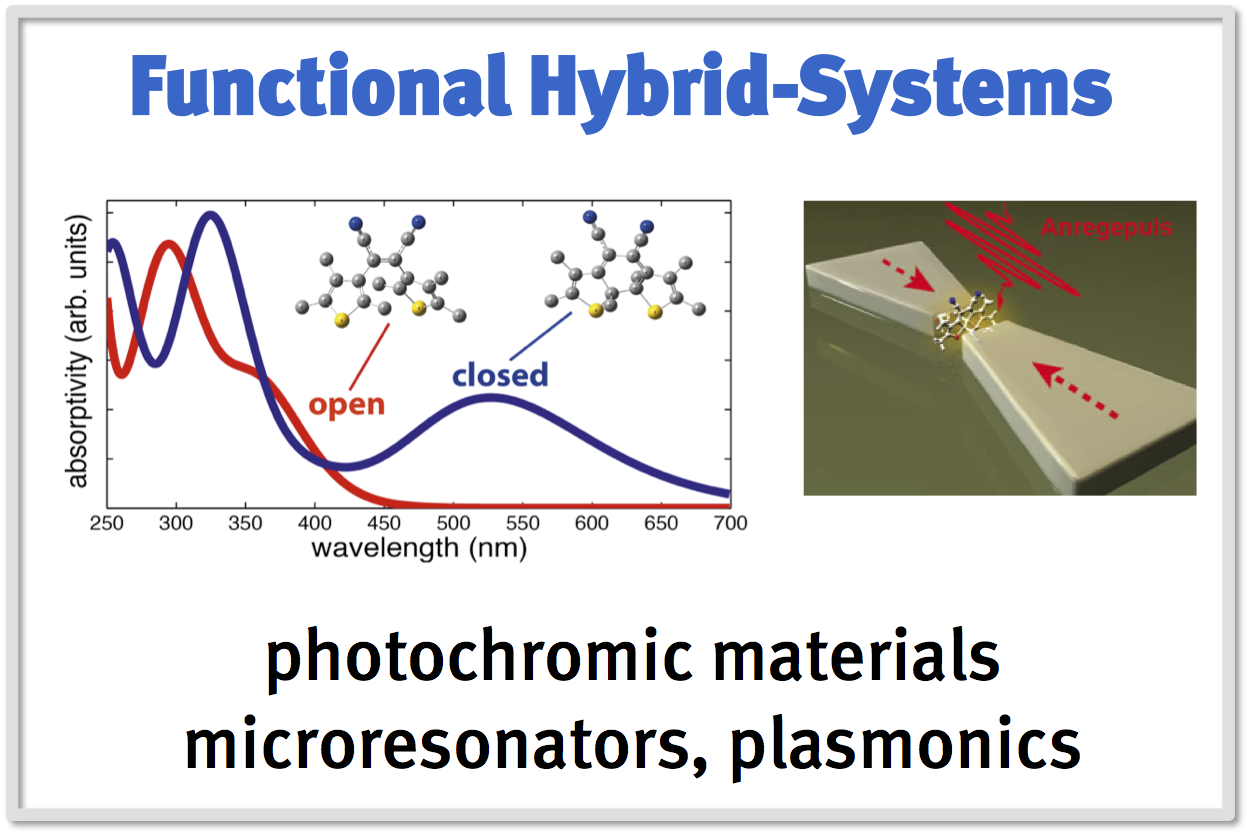Research
Our research covers different areas of theoretical spectroscopy of nanostructures.
Nonlinear polariton physics: we study the nonlinear dynamics of coherently driven polariton gases. One aspect we are particularly interest in, is the symmetry breaking that can occur in this nonlinear system away from equlibrium - leading to the spontaneous formation of patterns such as hexagons in the far-field emission of the cavity. We have recently demonstrated that these patterns can be externally and all-optically controlled. Our close collaboration with experiment has led to the observation of these patterns in a double-cavity system. We plan to extend our studies with an emphasis on the spinor character of the polariton fields. Future plans also include polariton systems that are promising for room-temperature applications and the interplay of polaritons with incoherent reservoirs.
The optical experiments are done in Jerome Tignon's group at ENS in Paris. On the theory side, we collaborate with Rolf Binder's group at the University of Arizona and Pui Tang Leung's group at the Chinese University Hong Kong.
Quantum optics with semiconductor quantum dots: semiconductor quantum dots have shown great promise as individual deterministic semiconductor source for single photons and entangled photons pairs. Recently we have come to realize that the excitation or de-excitation of the quantum dot biexciton through a direct two-photon process bears certain conceptional advantages. We have shown that through this direct two-photon process, the biexciton can serve as a reliable source of polarization-entangled photon pairs even if fine-structure splitting between the exciton levels is large. In the future, we will link our theoretical studies more closely with experiments and will investigate other promising scenarios aiming at the generation of single photons with polarization and frequency control through a two-photon emission process.
Here we collaborate locally with Artur Zrenner's and Jens Förstner's groups and with the group of Frank Jahnke in Bremen.
Excitation dynamics in extended molecular systems: we study materials that are highly relevant for applications in the field of organic photonics. We combine (i) high-level quantum chemical approaches on the molecular level (including density-functional theory and DFT-based linear and nonlinear response methods) with (ii) approaches (density-matrix theory and microscopic rate-equations) that allow studies of the nonlinear excitation dynamics in extended molecular films, including inter-molecular migration and annihilation of excitations. These processes play a crucial role in virtually any application based on molecular solid-state systems.
On this and related studies, we collaborate with Ian Galbraith's and Martin Paterson's groups at Heriot-Watt University in Edinburgh and with the experimental group of Ifor Samuel in St Andrews.
Polarons and charge-transfer excitations: in many cases, in addition to the molecular species, also their ionic counterparts play an important role. In photovoltaics molecules carrying a net charge inevitably emerge as a desired product after successful charge separation. In optoelectronics they contribute directly through electrical pumping or indirectly as an unwanted byproduct at elevated excitation densities. Currently, we study in particular charged species of certain donor-acceptor co-polymers, their spectral signatures and electronic states, as these materials have shown great promise for efficient charge separation upon photoexcitation.
These studies are embedded in a fruitful collaboration with Jochen Feldmann's group at LMU Munich, Elizabeth von Hauff's group in Freiburg, and Enrico Da Como's group at University of Bath.
Functional molecular systems and hybrid structures: we utilize photochromic materials in inorganic/organic hybrid systems. We include the molecules as photoactive components in otherwise crystalline photonic structures (e.g., microresonators) and plasmonic nano-antennas. Given the small mode volume of plasmonic resonators, these systems allow to study photochromism on the level of few molecules for ultra-fast switching applications as well as detailed studies of the underlying isomerization processes based on transient spectroscopy. We further investigate multi-photon excitations and study the non-adiabatic dynamics in the molecules' excited states.
We actively collaborate with the local experimental groups of Cedrik Meier, Thomas Zentgraf, and Heinz Kitzerow.
On the more technical side, we have a strong expertise in developing microscopic theories to describe the interaction of (laser) light fields with semiconductor nanostructures, such as quantum-wells and quantum dots and different molecular systems on the nanometer scale. Based on these theories, we calculate how these systems interact with light. We compute the optically induced excitation dynamics self-consistently together with the description of the propagating light fields and combine these calculations with different electronic structure methods to accurately calculate the confined electronic states inside the nanostructure. Computationally expensive problems we solve on the clusters of our local high-performance computing center PC2.



